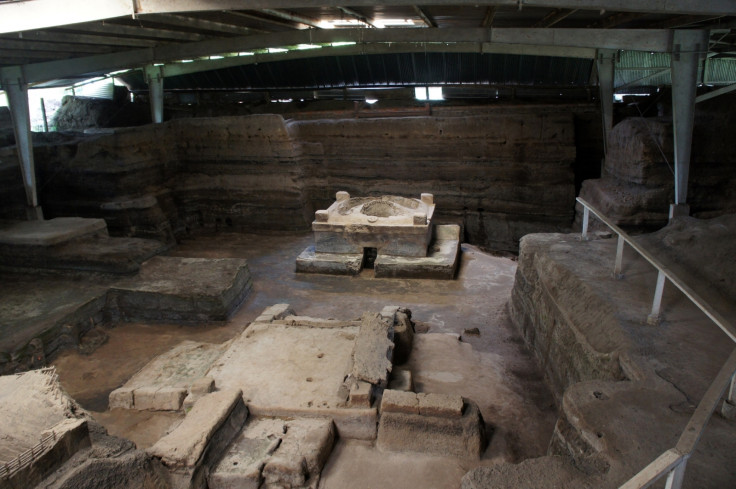'Maya Pompeii' offers snapshot of ancient village frozen in time by massive volcanic eruption
Joya de Cerén was a small Maya village buried under ash in the 7th century.

Between 650 and 660 CE, a small Maya village located in present-day El Salvador was entombed in ash in the aftermath of a destructive eruption of the Loma Caldera, a nearby volcano.
The inhabitants managed to escape, leaving all their possessions behind. Their fields and kitchen gardens were also well preserved.
For archaeologists, this village known as Joya de Cerén is a very valuable site.
It is a unique snapshot of a moment in the daily life of these ancient people, allowing researchers to learn more about their culture and providing compelling insight into their harvesting, storage and food preparation methods.
"The site is very unusual in in that it was buried by a particular kind of volcanic eruption that preserved elements that are not usually preserved. Most Maya archaeological sites are big cities with towering pyramids and extraordinary palaces but this is a small village of about 200 people – it's the first clear window into a small Maya village to date," Payson Sheets, Professor of Anthropology at the University of Colorado, Boulder, told IBTimes UK.
"For the first time we can see individual households and how they cultivated their food, how they functioned in the community. The social fabric was strengthened by each household providing a service to the village as a whole."
Sheets is the co-author of a new study published in the journal Antiquity detailing the results of recent research at Joya de Cerén.
Lead author Alan Farahani, Sheets and the rest of their team worked on reconstructing the location of the wild and cultivated plants at the site - the village 'plantscape'. Using innovative techniques, they were able to get a good idea of the plants that were cultivated and consumed by the inhabitants of Joya de Cerén.
"To physically recover the plants we used techniques similar to those in Pompeii. What happened is that the eruption occurred from a close source, it was a steam explosion with fine grain volcanic ash. After a year or two the plants decomposed but the hollow space inside the ash was still there after 1,400 years. We filled the hollows with dental plaster, thus preserving the agricultural fields in perpetuity," Sheets explained.

Then, all this data was mapped onto computers using specialist (GIS) map software, allowing the researchers to identify to replace food items in spatial context and to identify the cultural logic behind the placement of these items.
They obtained a unique perspective into the village's life. These investigations even revealed that some of the plants and food elements may have been more ritualistic in nature than what would have been expected at first glance.
"What we have at this site is very unique because usually when we find plant remains at archaeological sites, it's when they have been thrown away as trash. Here things are left exactly as they were when these people had to leave due to the eruption so it gives us a better idea of how they used the plant in their daily lives," Farahani, Postdoctoral Scholar at the Cotsen Institute of Archaeology (UCLA), told IBTimes UK.
"There was also evidence of the rituals performed by these people. For example in one of the structures, we see a deer skull that was potentially worn as a headdress. The food elements we recovered were not just used for food, they were also divinatory in nature, such as the beans we found with crystals."
The researchers were able to see in great details the ingredients that were used to prepare different kinds of food. Maize appears to have been the most popular plant growing at Cerén – with evidence of it having been eaten as corn on the cob. Trees also provided the inhabitants with guava and avocado, with stones from the latter found outside one property.
Sheets added: "The dominant thought is that the ancient Maya lived off seed crops like chili, beans, squash, and maize, while other people in lower Central America ate root crops like manioc. Here we find that these people cultivated manioc in great quantity, so things are much more complex than we had assumed."
Ultimately, the research shows how intimately the Cerén community was connected with its plants. The villagers tended and harvested them for food, medicinal, utilitarian and even potentially ritualistic purposes. By showing in unprecedented details an example of Maya feeding practices, the researchers improve our understanding of the Maya culture and that of daily life elsewhere in the ancient world.
© Copyright IBTimes 2025. All rights reserved.






















